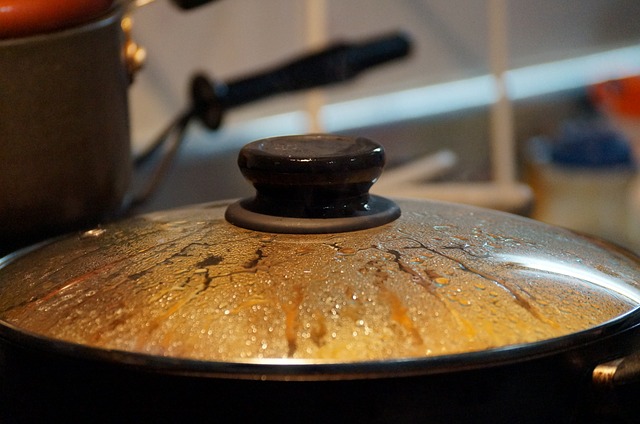As an outdoor grill aficionado, replicating a juicy tenderloin at home can prove elusive. From the right kind of grill to the quality of meat, you need to learn a few key things to unleash your grilling potential truly.
While some people prefer traditional grills when grilling steak, the chances are that you may never quite achieve that consistent moist feel. Perhaps it’s time that you considered other grilling options. Infrared grilling is arguably the newest trend in the BBQ scene.
The debate around infrared grills is justified, to some extent. And such a discussion usually ends with the million-dollar reference- how an infrared grill works. Read on to find out how this grilling beast operates, its pros, and how it stacks up against other grilling machines.
Before we explore the nitty-gritty of an infrared grill, let’s unravel the science behind it. As the name suggests, infrared grills use infrared energy to light a flame.
But how does it happen? Naturally, infrared heat exists in any physically moving body, meaning it can be triggered in some way. For example, you can feel infrared heat when you walk barefoot on a sunny day.
Therefore, infrared heat is present to some extent, in any grilling device, right from charcoal to propane to wood-fired to propane gas grills.
As the temperature of a grill rises, it emits a more intense amount of infrared heat. The same applies to infrared grills.
To attain temperatures capable of grilling crispy-crusty steaks, it has to hit peak temperatures of up to 900 degrees Fahrenheit, which it accomplishes in just 3 minutes. Crazy, right?
Infrared grills are a lot like the conventional gas-powered type except for their unique kind of grates, which directly transform direct heat into infrared heat.
As we mentioned, the lower surface of these grates reaches 900 degrees, while the upper end of the grills receives around 500 degrees. The heat reaching the belly of the grates is usually high-velocity energy.
So, the grates have to abruptly slow it down, with the energy getting harnessed to the meat itself. This technique preserves about 35% of moisture in vegetables, meat, and fish.
The part of the heat that crosses over to the top of the grates is mostly infrared, only slower but very intense. Perhaps worth mentioning is that grease, which falls off the meat onto the grates, doesn’t catch flames. Instead, it vaporizes into a sprayer, and if you cover the grill, your burger or steak will get a smoky flavoring.
That explains why a steak sizzles excitingly over these grates and only gets seared but not charred. At the end of the grilling, you’re sure to bite into juicy and delectable meat that doesn’t lose moisture the way it sometimes happens with direct grilling.
Advantages of Infrared Gas Grill
For many contemporaries, infrared gas grills are the ideal solution for modern grilling requirements. However, is it worth your dough? The truth is, it boils down to the infrared design right from the model, make, or product line.
Like most BBQ enthusiasts, you’d likely be interested in an infrared gas grill if you knew it provided some advantages. Here are some of its benefits:
Benefits
- Due to their mega-high temps, infrared gas grills cook food very quickly.
- Infrared gas grills are not prone to flare-ups. They vaporize any drippings.
- Infrared heat is not affected by windy conditions.
- It is an excellent tool for cooking high-quality foods. From meat to potatoes, you can be sure of a seared crust that’s golden from the outside.
- Infrared gas grills are favorably easy to clean after the BBQ. There’s no remaining ash to dispose of, or grease to collect since most of the oils evaporate.
- They encourage less fuel consumption. As the food directly cooks with infrared radiation, you’ll spend minimal time preheating. The flexibility of grilling a quick barbeque will help you save more on fuel.
- With better heat distribution, infrared grills eliminate any cold or hot spots from food. You can then bite into your steak without having to worry about inconsistencies.
Is Infrared Gas Grill Better than Regular Gas Grill?
A typical gas grill and an infrared gas grill differ in heat emission. In the traditional BBQ, heat is released from the burner, goes directly to the food, and is distributed irregularly. It may ultimately lead to ‘over-drying’ the product or charring some of its parts.
An infrared grill avoids this hassle by limiting the constant between hot air and food. The unique metal plate (which can be ceramics) placed between the food and burner serves to penetrate radiation evenly.
If you want a faster way of cooking with zero flare-ups, the infrared grill is a superior option. If you’d like a more authentic outdoor roasting experience, we believe that a regular gas grill has the upper hand.
Having described the main difference between an infrared grill and a regular gas grill, is infrared better? That choice is yours to make.
Knowing how an infrared grill works is the first step to appreciating its capability truly. It is easy to understand why most people prefer it to other grilling equipment.
While it cooks faster and more efficiently, it doesn’t relent on quality. You can seamlessly simmer, boil, or even smoke food ranging from fish and steak to poultry and vegetables.
A crisp finish is a bonus to the meal. Quite frankly, few regular grills can eclipse infrared grills in terms of mere versatility. And this article proves precisely why.
If you would like unbiased reviews, popular blogs, and much more educational info regarding infrared grills, don’t hesitate to visit our page.


